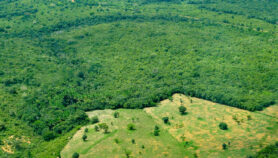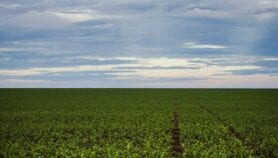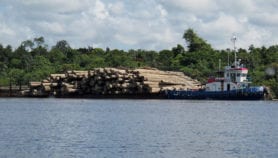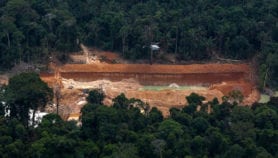By: Sian Lewis
Send to a friend
The details you provide on this page will not be used to send unsolicited email, and will not be sold to a 3rd party. See privacy policy.
The climate change debate offers a way to integrate forest management into development policy, but strategies must be informed by good science.
Conservationists have long recognised the role of forests in supporting indigenous people’s livelihoods in developing countries. In addition to fuel and building material, forests often provide critical supplies of food and medicine. They are also an important source of ever-dwindling biodiversity. In Africa, researchers estimate that more than 70 per cent of people depend on forest resources.
More recently, cash-strapped governments have grown interested in the idea of being paid to conserve forests because of the ‘ecosystem services’ they provide, such as moderating local air temperature; controlling water flow and mitigating floods; and generating rainfall.
But forests are now being propelled into the spotlight for another value: their ability to store carbon and mitigate climate change. Developing countries will be paid for reducing emissions from deforestation and forest degradation (REDD) in a scheme to be finalised at this year’s climate negotiations in Copenhagen.
Getting REDD right for everyone
Forests act as carbon sinks — trees and soil absorb carbon from the atmosphere and store it away. If left intact, such forests could play a crucial role in offsetting carbon emissions.
But many tropical forests are being rapidly cleared by logging or to make way for agriculture, releasing the carbon stored in them either rapidly if they are burnt, or more slowly as the organic matter decays.
Deforestation can also change soil dynamics and increase erosion, both of which can release more carbon into the atmosphere. Overall, researchers estimate that deforestation emits around one fifth of global carbon emissions.
Any effort to tackle climate change in the long term must therefore involve reducing deforestation.
The 2007 UN Framework Convention on Climate Change (UNFCCC) talks in Bali, Indonesia, saw a broad global commitment to reducing emissions from deforestation, and countries around the world are now busy thrashing out the details in time for Copenhagen.
REDD offers a singular opportunity to combine forest management with sustainable development but establishing a one-size-fits-all framework is not easy, particularly given the diversity in forest types, management and use found across the tropics.
As a result while there is an emerging consensus on some aspects of REDD — for example, that only developing countries should be able to benefit, and that funding should come from multiple sources — many of the details remain to be agreed.
Simultaneously meeting local needs and adding to sustainable economic growth is a particular challenge for REDD. A critical component to achieving this is to ensure that REDD strategies are informed by good science that is also locally relevant.
Diverse viewpoints
This week, we put REDD under the spotlight in a series of articles to identify and explore where science and research can make a difference.
A background article summarises the main issues including the development of REDD activities in global climate negotiations, explaining some of the stumbling blocks and outlining how scientists can help (see Reducing forest emissions: Facts and figures).
The task of monitoring, reporting and verifying REDD projects is highlighted as a particular challenge for many developing countries, although recent advances in technologies such as remote sensing can help (see An eye in the sky watching forests disappear).
Science can help in other ways too. Godwin Kowero, head of the African Forest Forum, emphasises the depth of local knowledge held by African forestry researchers and urges global negotiators to listen, and learn from, these critical perspectives (see Getting REDD right for Africa).
Festus Akinnifesi and colleagues from the World Agroforestry Centre offer one such viewpoint, arguing that incorporating agroforestry into REDD is the key to both delivering climate goals and improving livelihoods in Africa (see Africa needs agroforestry to cut forest emissions).
Peter A. Minang, from the ASB Partnership for the Tropical Forest Margins, provides another. He argues that support for REDD is based on flimsy evidence and that we know little about costs for developing countries (see What are the real costs of reducing forest emissions?).
Meanwhile, N. H. Ravindranath and Shamama Afreen, from the Indian Institute of Science in Bangalore, suggest that REDD is inappropriate for South Asia, saying that a scheme that rewards afforestation, reforestation and growth in forest carbon stocks is needed (see Climate deals should reward wider forest management).
Other problems in REDD proposals are identified by Romain Czebiniak, policy advisor on climate change and forests for Greenpeace. He suggests that while REDD is a critical ingredient in any effort to stay below a two-degree rise in global temperatures, it cannot be simply applied in carbon markets where experience shows that few developing countries can readily participate (see The promise and peril of REDD).
Twin goals
This is by no means an exhaustive list of issues facing REDD negotiators, particularly those from the developing world, as they prepare for Copenhagen. But these articles, taken with the background material we link to, will provide a useful overview of some of the key issues at the interface between REDD and science.
Whatever path the REDD debate takes, negotiators must keep in sight the twin goals of supporting sustainable development while also addressing climate change. A well-structured framework for REDD could help deliver both. But only if it is informed by good, and locally-relevant, science.
Sian Lewis
Commissioning editor, SciDev.Net













